My recent visit to the Honolulu Museum of Art was prompted by two exhibits on women artists in Territorial Hawai`i. One exhibit focused on Women Artists in Hawai`i: 1900-1950, which encompasses most of the Territorial period. Both residents and visitors to the islands, these women had much to contribute to Honolulu’s (to me) surprisingly vibrant art scene. But it was the companion exhibit that caught my attention.
Days of Grace: California Artist Grace Hudson in Hawai’i introduced me to an artist who achieved commercial success with her portraits of native peoples in California and Hawai`i. Grace’s interest in art and ethnography came naturally. Her parents were deeply interested in the Pomo Indians near their home in Uziah, California. They were also talented photographers.
About 1890 Grace married Dr John Wilz Hudson who encouraged her to focus her work on the nearby Pomo Indians
Grace’s first professional portrait, National Thorn, was exhibited at the 1891 Minneapolis Industrial Exposition.
By 1895 Grace had become so successful, John was able to give up medicine to develop his own interests in archeology and ethnography. Unfortunately the stress of producing enough saleable art began to affect Grace’s mental and physical health. She was exhausted, anxious, and unable to sleep soundly. On the advice of friends, Grace and John concluded she would be able to recover in Honolulu. She would travel alone.
Grace arrived in Honolulu on January 2, 1901 and took up residence at the Royal Hawaiian Hotel on the corner of Hotel and Richards Streets. With letters of introduction and the connections she had made aboard the Zealandia out of San Francisco, Grace quickly became part of Honolulu’s social and art scene.
Grace called this portrait Emma Square after the park near her hotel. It was a popular place for lei sellers. Grace wrote that one of the lei sellers had taken a fancy to her, but whether she was the subject of Grace’s portrait remains unknown.
In June Grace traveled to Hilo aboard the Kinau, a vessel she referred to as an “evil smelling craft.” Initially Grace stayed at the Hilo Hotel. She briefly relocated to Volcano House and then returned to Hilo where she began painting.
One of the pictures begun in Hilo was Punahele which was shown at Grace’s October art exhibition at the Pacific Hardware Company in Honolulu. The portrait was well-received and later shown at the 1909 Alaska-Yukon-Pacific Exposition in Seattle.
In 1901 Hilo was a pretty quiet town, and though Grace found plenty of subjects for painting, she missed the social life in Honlulu. She returned to the Royal Hawaiian Hotel in August, later moving to the hotel’s annex in Waikīkī which featured cottages with seaside amenities. In Waikīkī Grace encountered the model for Aloha.
Grace didn’t assign a title to this portrait in her painting diary, but the custom made frame is embossed with the name ‘Aloha.’ Grace gave the portrait to her husband. There were only three paintings that remained in the Hudson household until their deaths. Aloha was one of them.
Grace arrived back in San Francisco on November 16, 1901. She was rested, had a new enthusiasm for her art, and was apparently happy to return to her husband.
???
Featured Image: Grace Hudson. U.S. Public Domain. Wikimedia Commons
Photos:
John & Grace Hudson. U.S. Public Domain. Wikimedia Commons.
Paintings:
National Thorn by Grace Hudson, 1891.
Emma Square by Grace Hudson, 1901.
Punahele by Grace Hudson, 1901.
Aloha by Grace Hudson, 1901.
All paintings in U.S. Public Domain. Wikimedia Commons.
Days of Grace: California Artist Grace Hudson in Hawai’i. Honolulu Museum of Art.
Grace Hudson Museum and Sun House.
Women Artists in Hawai`i 1900-1950. Honolulu Museum of Art.
Karen Holmes & Sherri Smith-Ferri. Days of Grace: California Artist Grace Hudson in Hawaii. Ukiah CA: Grace Hudson Museum & Sun House. 2014.

Sandra Wagner-Wright holds the doctoral degree in history and taught women’s and global history at the University of Hawai`i. Sandra travels for her research, most recently to Salem, Massachusetts, the setting of her new Salem Stories series. She also enjoys traveling for new experiences. Recent trips include Antarctica and a river cruise on the Rhine from Amsterdam to Basel.
Sandra particularly likes writing about strong women who make a difference. She lives in Hilo, Hawai`i with her family and writes a blog relating to history, travel, and the idiosyncrasies of life.

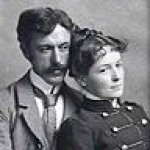
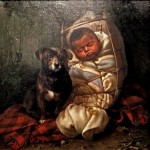
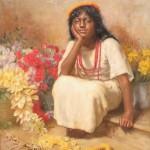
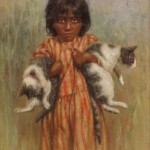
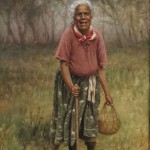

Having recently been to Hawaii, I really enjoyed your post. Beautiful art!
Sandra, Great stuff! This one and all the others, laid a bit so have time to look again! Thank you, Mahalo1
Thank you Paula & Kassandra. I’m always glad to know my offerings give pleasure to readers like yourselves.